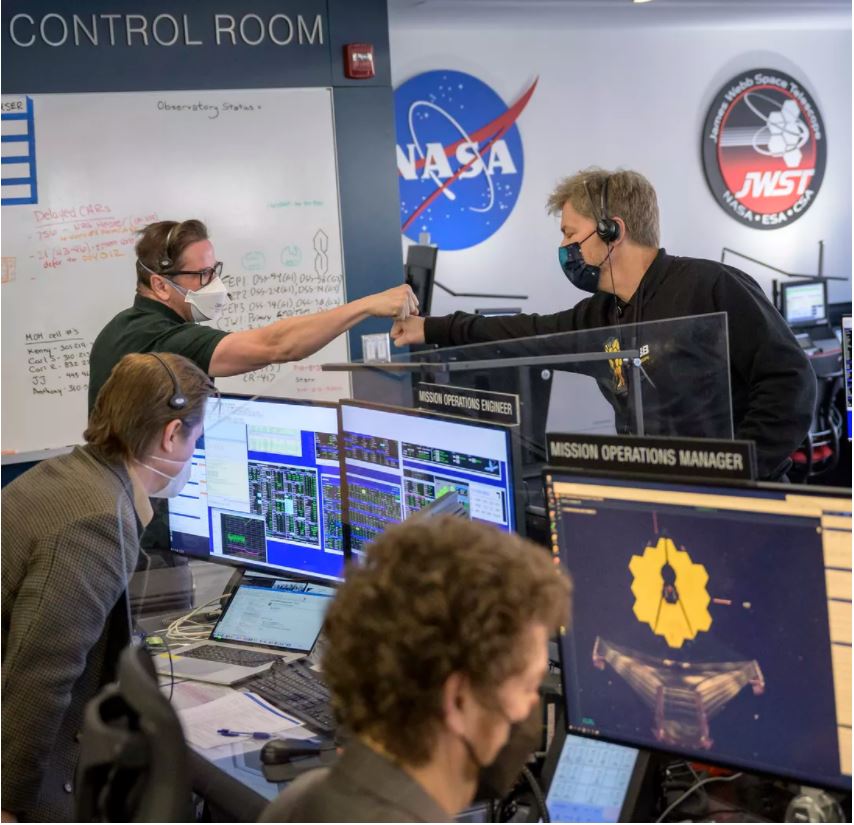NASA’s $10 billion James Webb Space Telescope blasted out on Dec. 25, poised to peer far into the cosmos and record photos of the universe as it was when time started, thanks to the visionary dreams of a dedicated team of scientists. As we watched the beginning of astronomy’s next significant chapter, cheers resonated throughout the world.
On the other hand, Webb still had a long way to go. So, first, the explorer traveled for its cosmic work station at the second Lagrange point, or L2, where the sun’s and Earth’s gravity balance out to maintain the satellite in a constant location, as it unfurled its origami-like folds while crossing space’s cold and black abyss.
On Monday, Webb arrived at its final destination shortly after 11 a.m. PT/2 p.m. ET. NASA engineers fired Webb’s thrusters for about five minutes to finalize the probe’s placement. The achievement was received with a well-deserved exhale in addition to applause.
“Welcome back, Webb!” In a statement, NASA Administrator Bill Nelson stated. “Congratulations to the entire team for all of their efforts in making Webb’s arrival at L2 today a success. We’re one step closer to solving the universe’s secrets. And I’m looking forward to seeing Webb’s first new universe views this summer!”

Webb’s address in space
Our new lens on the cosmos now rests 1 million miles away from Earth, well past the moon’s orbit, and always on the side of our planet that does not face the sun at the second Lagrange point.

Webb can use less fuel, has a great perspective of the universe, and its sunshield can protect it from the heat of the sun, the Earth, and the moon, allowing it to maintain the frigid temperatures the telescope requires. Because its infrared imaging processors are responsible for unlocking never-before-seen areas of space, the scope must be kept cool at all times.
These fantastic machines detect exact heat signals from far away in the universe, so heat from its cosmic neighbors – and even Webb himself – behaves as noise in the data. More information on the science of infrared may be found here.
“Imagine gazing through a telescope at night with your own eyes, and someone puts a spotlight in your eyes,” said Alison Nordt, a member of the Webb team and the space science and instrumentation director at aerospace firm Lockheed Martin.
“If you have an infrared telescope at ambient temperature, it will be swamped by its light, which is its own heat.”
Now that Webb has been locked into L2’s orbit, NASA must wait for the probe to cool down completely, which will take several weeks. The team claims it will then ensure that every piece of the revolutionary space explorer – including its 18 mirror segments and infrared imagers – are aligned and ready for operation when Webb is tugged along its trajectory.
We’ll get our first unfiltered view of the cosmos in a few months.


